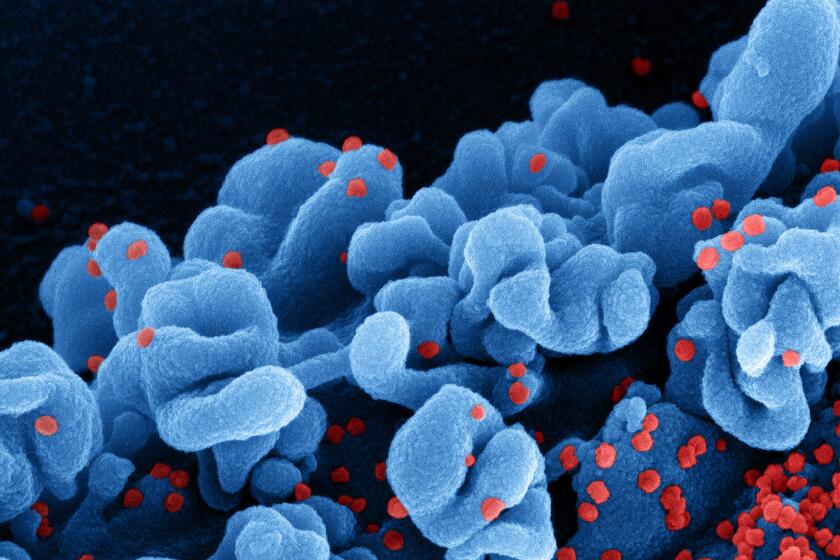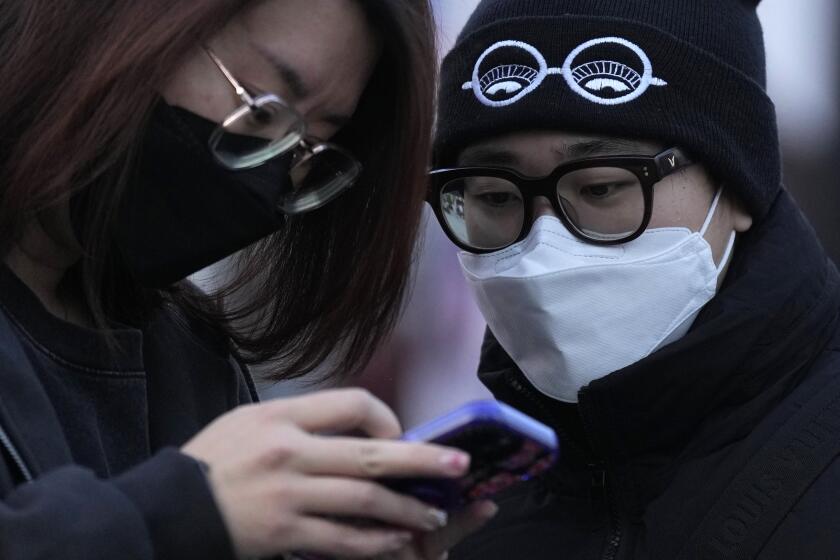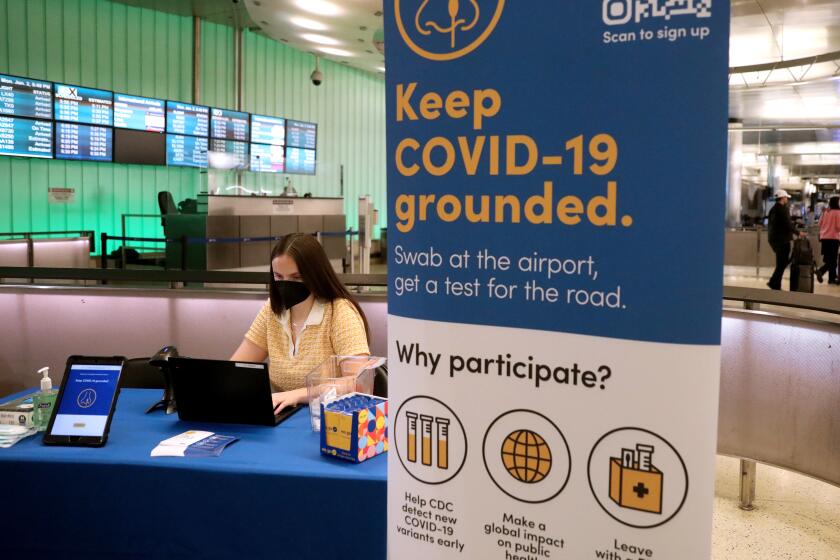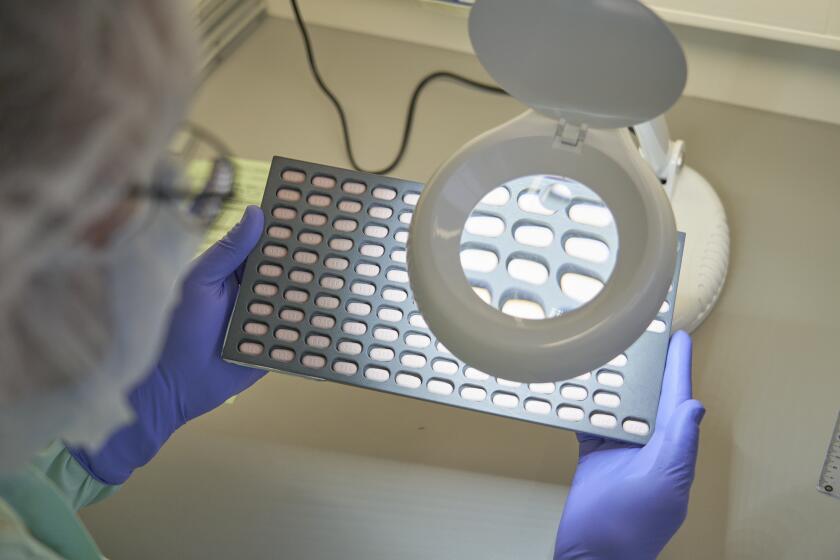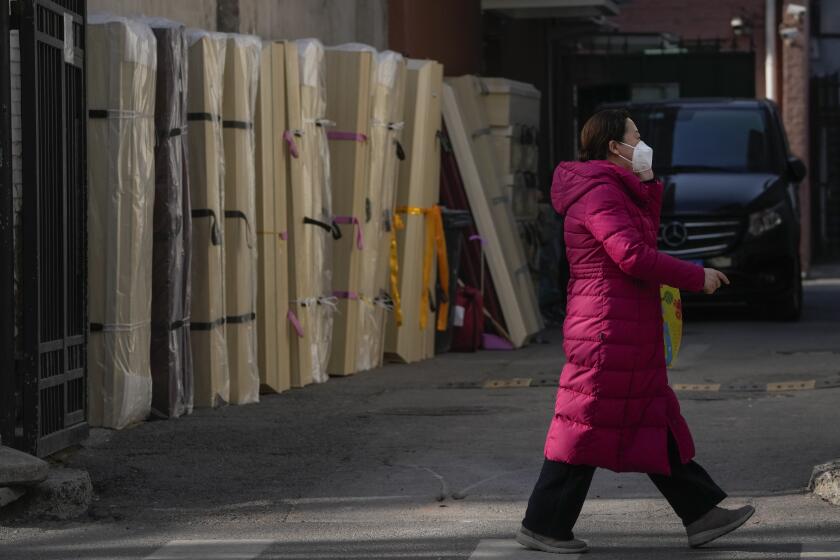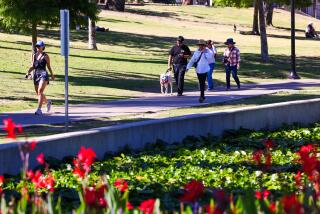Will XBB.1.5, the latest Omicron subvariant, fuel another California COVID surge? What we know
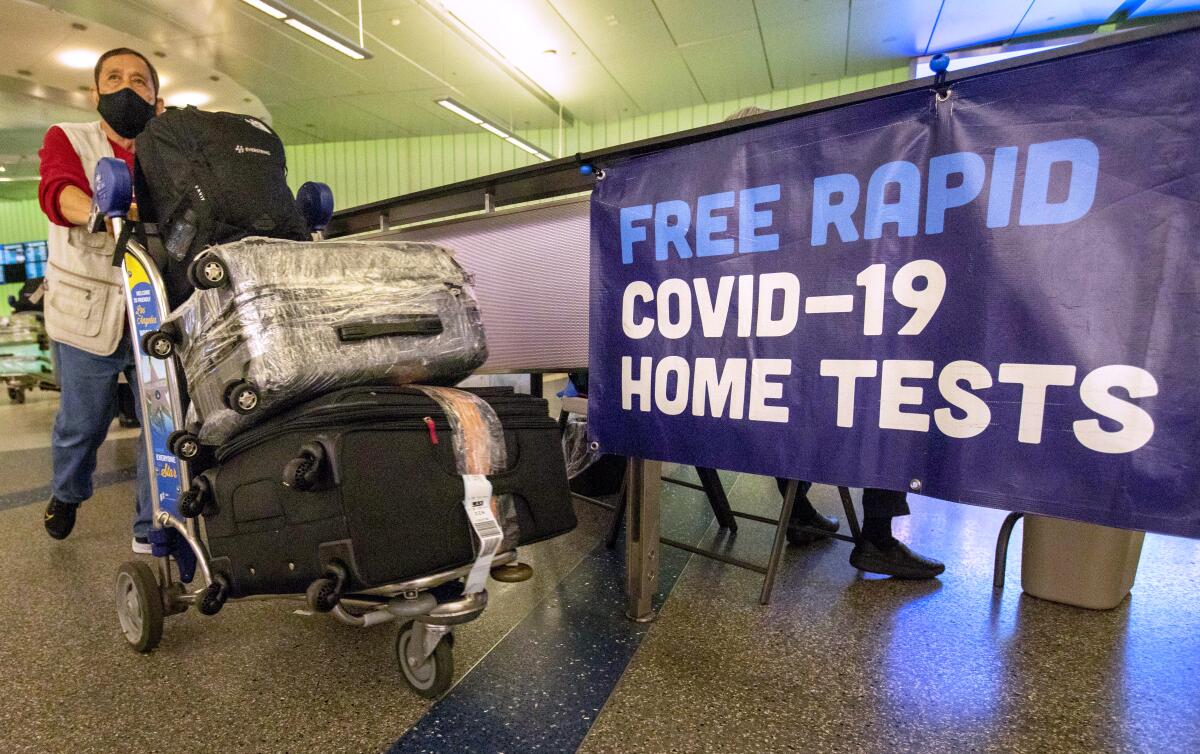
The latest Omicron subvariant — perhaps the most infectious yet — has gained a foothold in California, a potentially problematic development given the possibility of a post-holiday spike.
However, it’s unclear whether the circulation of this latest strain, XBB.1.5, will alter the trajectory of the COVID-19 pandemic.
A slew of alphanumerically designated coronavirus subvariants, each more easily spread than the last, surfaced last year. Those emergent strains, while disruptive, did not come close to spawning the same sort of devastation seen in earlier waves.
But much remains unknown how — or if — XBB.1.5 may affect disease severity or whether generally waning immunity from vaccines or a previous brush with the coronavirus will leave the population more exposed to infection.
The newest Omicron subvariant of concern is XBB.1.5. It’s more contagious and more resistant to existing immunity than any of it coronavirus predecessors.
XBB.1.5 “is the most transmissible subvariant that has been detected yet,” said Dr. Maria Van Kerkhove, the World Health Organization’s technical lead on COVID-19.
“We are concerned about its growth advantage, in particular in some countries in Europe and in North America, particularly the Northeast part of the United States where XBB.1.5 has rapidly replaced other circulating variants,” she said during a news conference last week.
In the Northeast, where the subvariant is the dominant circulating version of the coronavirus, COVID-19-positive hospital admissions have risen in recent weeks and now surpass levels from last summer’s wave, according to data from the U.S. Centers for Disease Control and Prevention.
“New York — where the XBB.1.5 variant was first detected, and the U.S. bellwether for its growth — still shows signs of increasing hospitalizations, particularly for those age 70+,” Dr. Eric Topol, director of the Scripps Research Translational Institute in La Jolla, wrote on Twitter Friday.
Topol said in a commentary published Sunday in the Washington Post that the emergence of XBB.1.5 shows the coronavirus still isn’t done with us.
The World Health Organization is ‘concerned about the risk to life in China’ amid the coronavirus’ explosive spread and the lack of outbreak data from the Chinese government.
It’s not yet clear whether XBB.1.5 is fueling a hospital rise. Several factors, including increased transmission stemming from travel and gatherings over the winter holidays, are likely at play.
But given the subvariant’s growth advantage, officials say the trend warrants a close examination.
“We can’t attribute the increase in hospitalizations to XBB.1.5 yet, but we are working with U.S. CDC colleagues closely and we have asked them for a detailed risk assessment of XBB.1.5 as well — just as we would with any country and any subvariants that are circulating,” Van Kerkhove said. “We need to go deeper and look at the reasons for the increases in hospitalization and determine what is happening.”
Despite its growth elsewhere, XBB.1.5 is nowhere close to dominant in California. The state Department of Public Health estimates it accounts for about 7.8% of cases — the fourth-most-common subvariant circulating in the Golden State.
However, the share of cases attributed to it has seemingly risen in recent weeks. In the region that includes California, Nevada, Arizona, Hawaii and the Pacific island territories, an estimated 7.6% of coronavirus cases over the last week were thought to be XBB.1.5, up from 2.4% the week leading up to Christmas, CDC data show.
The CDC has a new plan to get a jump on new coronavirus variants — asking LAX passengers arriving from overseas to swab their noses for the sake of science.
Those projected proportions often change as more data become available — sometimes drastically so. For instance, the CDC initially estimated that about 40.5% of coronavirus specimens circulating nationwide last week were XBB.1.5, but that figure has since been revised downward to 18.3%.
According to the agency, “These projections can be uncertain or fluctuate within a wide predictive interval when a variant is just beginning to spread.”
Over the most recent week, the CDC estimates that XBB.1.5 accounts for 27.6% of new cases across the U.S., the second-highest share of any coronavirus strain.
XBB.1.5 is a descendant of XBB, which is a recombinant of descendants of the Omicron subvariant BA.2.
“Our concern is how transmissible it is,” Van Kerkhove said. “It does have immune escape ... and the more this virus circulates, the more opportunities it will have to change.”
Faced with the possibility of another COVID-19 surge stemming from parties and travel over the winter holiday season, Los Angeles County health officials are urging workers and students to wear masks in indoor public settings for at least 10 days once they return to work and school.
In Los Angeles County, coronavirus cases remain high but have been declining since early December after a Thanksgiving-fueled wave. But officials have warned about the possibility of a second peak stemming from winter holiday gatherings and travel.
The L.A. County Department of Public Health is urging people returning to work or school from winter break to mask up in indoor public settings for at least 10 days. That span is the rough incubation period for the coronavirus — the time between when someone is exposed and when they might be contagious, even if they don’t develop symptoms.
Doing so could blunt the severity of any potential wave this month, officials said.
For the seven-day period that ended Tuesday, L.A. County recorded 2,058 cases a day. On a per capita basis, that’s 143 cases a week for every 100,000 residents. A rate of 100 or more is considered high.
The latest case rate represents a 12% decrease from the prior week.
Hospitalizations statewide have stabilized after an autumn rise. As of Monday, 4,159 coronavirus-positive patients were hospitalized in California — a 6% decrease from two weeks ago. That figure includes those hospitalized with COVID-19 and a larger segment of patients who test positive after seeking care for some other reason.
Health officials also have expressed optimism about the lower numbers of COVID-19 deaths reported this fall and winter. Authorities in L.A. County attribute the trend to a variety of tools that weren’t available previously: an updated COVID-19 booster shot that’s a pretty good match to this winter’s circulating strains; anti-COVID-19 pills such as Paxlovid and molnupiravir that reduce the risk of death; and increased use of masks, particularly in crowded or indoor settings.
Drugs such as Paxlovid and molnupiravir are free and widely available, but officials say doctors are not prescribing them as much as they should.
Officials this season also haven’t had to deal with the late emergence of a dramatically different variant as they did with the initial version of Omicron in the autumn of 2021, which rapidly spread over the Thanksgiving and then the winter holidays.
“We do expect further waves of infection around the world, but that doesn’t have to translate into further waves of death because our countermeasures continue to work,” Van Kerkhove said.
Still, COVID-19 remains a leading cause of death in the U.S. Since early October, about 36,000 COVID-19 deaths have been reported nationally, compared with an estimated 14,000 from the flu.
Weekly reported COVID-19 deaths — which lag case rate trends — also are increasing again after a brief dip between Christmas and New Year’s Day. L.A. County reported 160 COVID-19 deaths for the week that ended Tuesday. That’s nearly quadruple the 43 deaths recorded during the first week of November.
The 160 deaths are a new peak for L.A. County this autumn and winter. It is, however, a fraction of the highest from last winter, when 513 deaths were recorded the week that ended Feb. 9.
It’s possible the temporary decrease in reported deaths resulted from data delays over the winter holidays.
Officials expect more than 2 billion trips to be made in China during the weeklong holiday, the most important time for visiting family and friends.
Those at highest risk of death from COVID-19 are older people who are unvaccinated and those who are not up to date on their booster shots. Throughout December, people ages 50 and older had the highest rate of coronavirus cases, hospitalizations and deaths in L.A. County.
At the global level, the World Health Organization “is following closely and assessing the risk of this subvariant and will report accordingly,” said Director-General Tedros Adhanom Ghebreyesus, referring to XBB.1.5.
“COVID-19 will no doubt still be a major topic of discussion, but I believe and hope that with the right efforts this will be the year the public health emergency officially ends,” he said.
More to Read
Sign up for Essential California
The most important California stories and recommendations in your inbox every morning.
You may occasionally receive promotional content from the Los Angeles Times.
